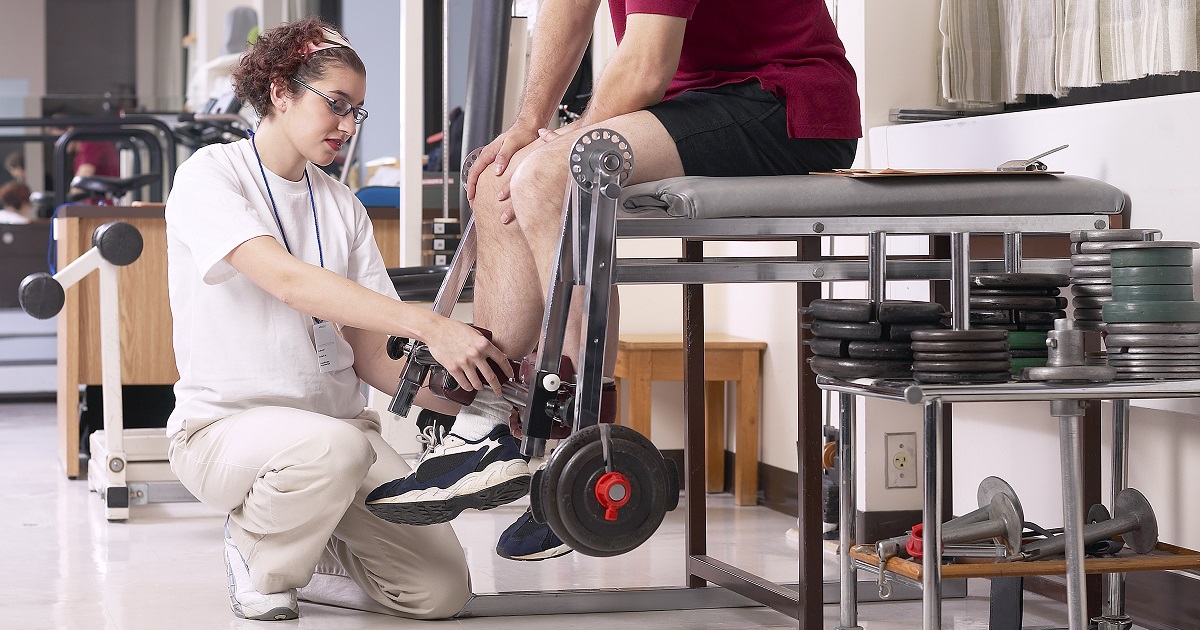For Media Inquiries
Contact Revee White, Director of Marketing and Communications at rwhite1@mem-ins.com or 573.499.4190.
When it comes to pain management, today’s Missouri residents have choices. They can take over-the-counter medication. If that doesn’t work, then a doctor might prescribe something stronger. A regular physical therapy routine might offer some relief. For someone who struggles with frequent pain, making the right choice is an important one. However, Missouri residents have a new option in 2020: medical marijuana for pain management.
In this episode of the WorkSAFE podcast, the Vice President of One Call Care Management, Kevin Glennon, joins us. One Call connects injured workers with any extra medical services they might need. This includes therapy, rehab placement, and home health care. Glennon has been in the healthcare industry since 1985 as a nurse. He joined One Call in 1997 and has been with the company ever since.
Be sure to check out part one of our series to learn more about medical marijuana in Missouri. If you are an employer, this episode is a great place to learn about the basics and steps you can take today in your workplace. In this episode, we’ll learn more about how marijuana is used as a medical treatment and the future of regulation. Then we’ll learn about how medical marijuana and opioids are going head to head.
Listen to this interview on the WorkSAFE Podcast, or read the show notes below.
Note: This discussion is about a developing topic and is for educational purposes. Be sure to consult your legal counsel when making any decisions regarding medical marijuana or products containing THC or CBD.
A coin with two sides: marijuana’s chemical compounds
The average cannabis plant contains two important chemical compounds: tetrahydrocannabinol (THC) and cannabinol (CBD). Many people are only familiar with the THC component. THC is what causes the “high” or euphoric effect. The lesser-known component, CBD, does not cause this effect. It also does not contain high levels of THC. As a result, it typically doesn’t result in a positive drug test. Products with CBD have been used in Missouri for years prior to the recent medical marijuana law.
Marijuana products: a solution to chronic pain
Marijuana products are growing in popularity as an option for pain management. “If you think about, THC is the head high,” Glennon explained. “CBD affects the body.” For people who are always in pain, finding relief can be challenging. In his line of work, Glennon has seen CBD products, including those infused with THC, offer a solution. CBD products are currently not federally regulated. It’s up to the dispensary, or the location selling the items, to limit how much THC they contain. An average CBD product could contain anywhere from 0.3% – 1.0% of milligrams of THC. In some states, like Delaware and Georgia, you might find products containing up to five percent.
CBD products are often used to treat conditions like anxiety, restlessness, and sleeplessness. They also work well for people who suffer from muscle spasms and arthritic pain. In his research, Glennon has found that medical organizations are beginning to accept medical marijuana as a solution. “In fact, the National Arthritis Foundation recently within the past month published a position paper regarding the use of CBD as a medical alternative to prescription medications,” Glennon said.
Glennon said that doctors recommend patients take it “low and slow” when it comes to CBD products. This means starting with a low dose—and taking it several times throughout the day. Creams or balms containing CBD are usually the product of choice. Some people prefer CBD oil that goes directly under the tongue. CBD is also available as a vape product that can be smoked. However, this method is quickly dropping in popularity. “The controversy still continues, especially recently, with all of the negative effects of vaping that we are seeing, more and more people are sticking with the edibles, the topicals, or the oils dropped under the tongue.”

The future of regulation
There are no federal regulations around the lawful use of CBD and THC. Since medical marijuana isn’t legal at the federal level, there are no dosage or other usage guidelines around it. That means it’s up to those in the cannabis industry to create their own rules and guidelines. However, some providers in the industry are taking that responsibility seriously. Glennon has seen a positive change in the packaging of marijuana products in the past 3-5 years. They now include more instructions. Users are given directions and limits on how much they should consume. If it is an edible product, like butter or candy, there is often a recommended serving size.
Additional regulation will eventually come – with legalization comes the need for guidelines. “In fact, one of the most popular bills on Capitol Hill at this point is the ‘regulating marijuana like alcohol’ bill,” Glennon shared. “All of the bills on Capitol Hill will open up the banking industry.” Growers and dispensaries currently can’t keep their money in federally-chartered banks. A successful bill could open the door to guiding laws and taxes.
The physical effects of marijuana
Medical marijuana comes with a major challenge for employers. There isn’t a test to determine just how impaired or “high” an employee is at a particular time. Glennon explained that although someone who uses THC in its inhaled form will see immediate effects, they only last 1-3 hours. “If someone uses marijuana every evening instead of having a cocktail after work, they will generally always test above that five milligrams for THC,” he shared. “However, just like the person who has a cocktail in the evening, the effects will be worn off—especially after six or eight hours of sleep.”
The importance of documentation
How can you tell if someone is really impaired by THC or not? Watch for signs of impairment or unusual behaviors. Formal training or even certification can help with this. Empower your employees to recognize signs of impairment on the job. “We used to say in the sixties, ‘You can always tell when someone’s stoned,” Glennon quipped.
When it comes to claims management around medical marijuana use, documentation is important. You or an employee can record your observations. Along with a positive drug test, they can provide you with stronger evidence. If someone has an incident on the job, conduct an incident investigation. Do this as soon as possible. Talk to your employees. Have them write down anything they saw or heard. These statements will be important, both for your claim and from a legal standpoint.

Medical marijuana: challenging opioid use
For injured workers and people with chronic pain, medical marijuana is changing how they manage their pain relief needs. In the work comp industry, one of the most challenging problems is opioid misuse and addiction. In 2017, Missouri averaged about 71 opioid prescriptions per 100 people. Getting injured workers back to work can provide many benefits like a higher paycheck, a regular schedule, and more stability. However, opioids can result in spending a longer time on temporary disability. Not only does this increase costs, but it prevents them from returning to work sooner.
With the introduction of medical marijuana, people in several states are finding it easier to leave opioids behind. Glennon has noted that medical providers are seeing positive results. “The individuals are weaning off their other prescription medications,” he shared. “They report that their pain is much better controlled, that they are able to function better, and that they are actually leading a more productive lifestyle.” When individuals leave opioids behind, they are also leaving the side effects of the medication behind too.
Glennon found that in states where medical marijuana use was legalized, opioid prescriptions were reduced by 2.2 million daily doses. In states with legalized recreational use, nearly 3.75 million doses were eliminated.
The future of medical marijuana in the work comp industry
The future around medical marijuana in the work comp industry is still uncertain. Glennon suggests employers should work closely with their Human Resources department, legal counsel, and work comp carriers in the meantime. Reviewing safety-sensitive positions is critical, especially positions “where you really have to be very aware of what is going on around you, for your own safety and for the safety of those you’re working with.”
Glennon recognizes that there will always be individuals who over-indulge, just like with alcohol. However, medical marijuana may provide injured workers with a new pain management solution. Glennon wants to conduct extended research on how it impacts an injured worker’s recovery and return to work. Will medical marijuana allow workers to participate more in physical therapy? Will it allow them to return to work sooner? These are all questions that have yet to be answered.
Miss the first part of our two-part podcast series on medical marijuana? Listen here. >